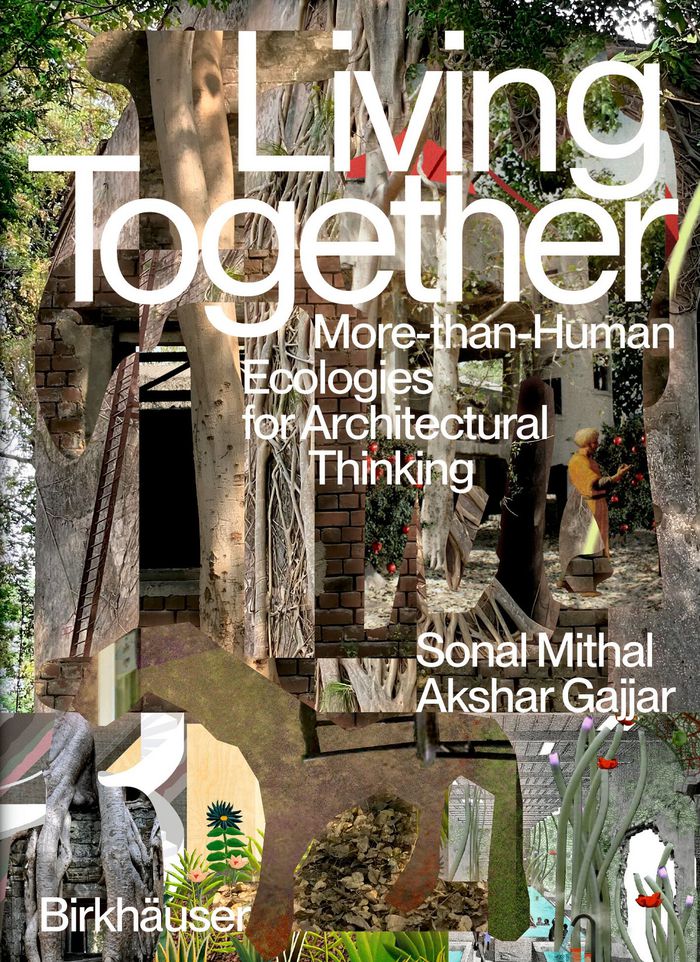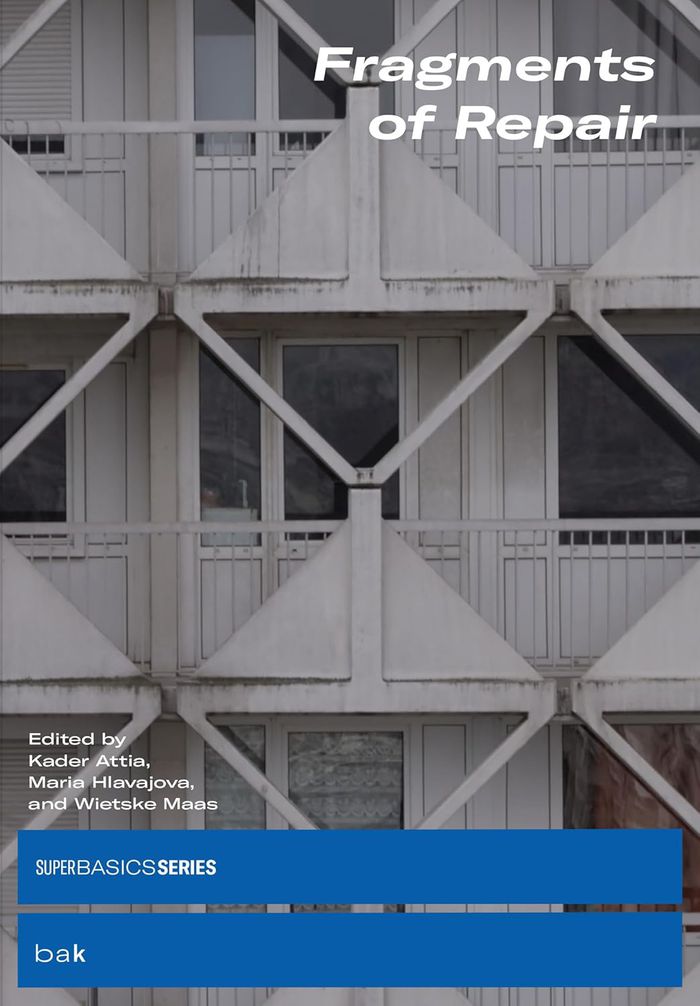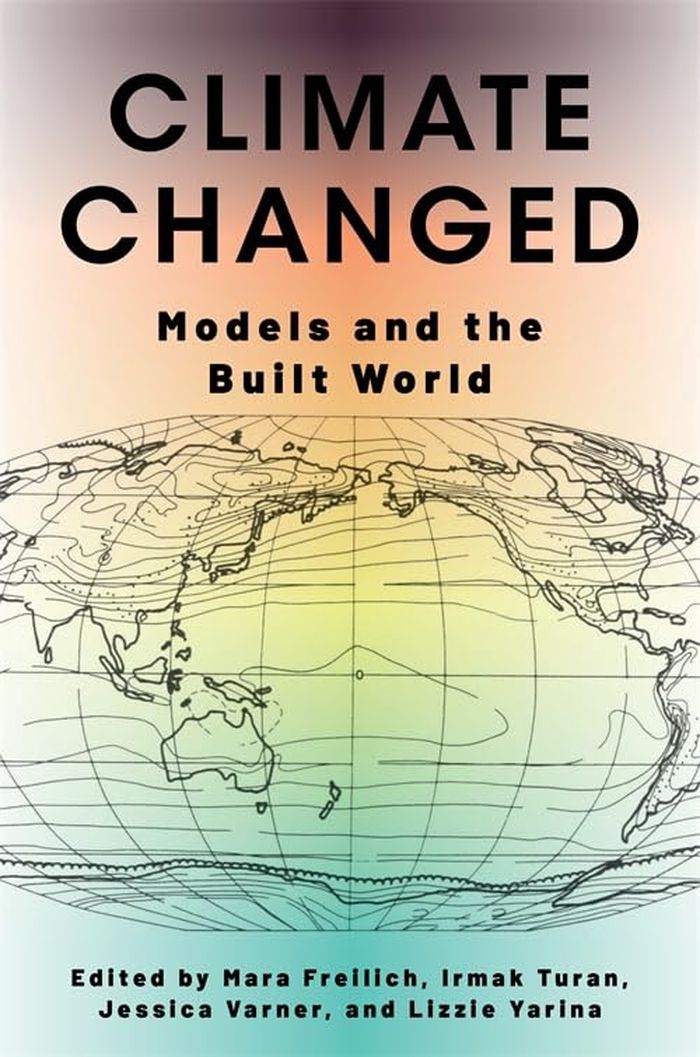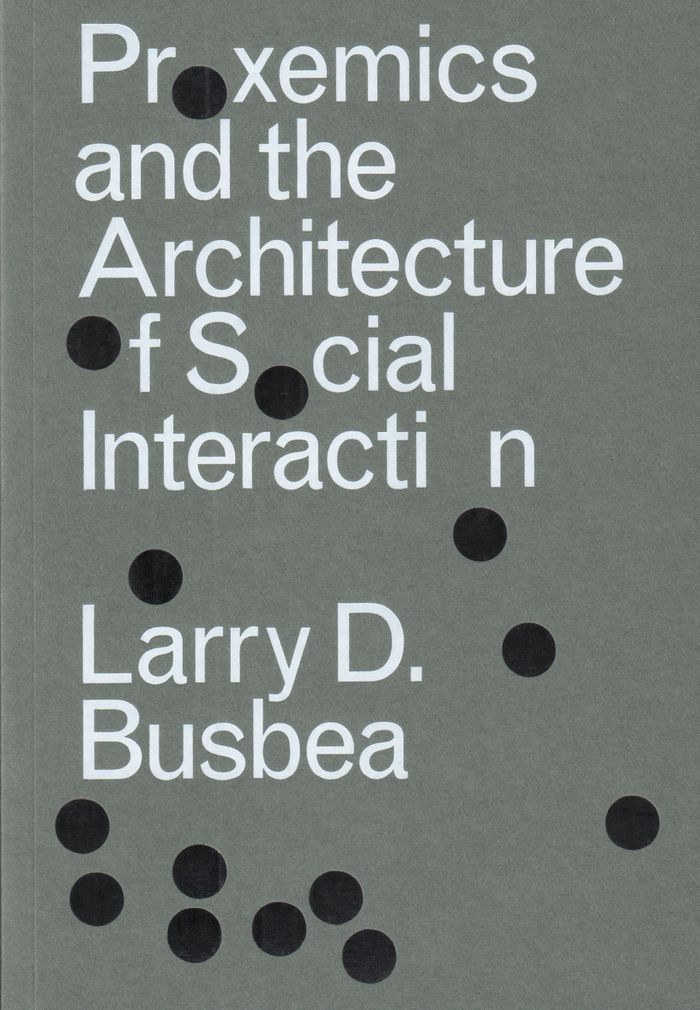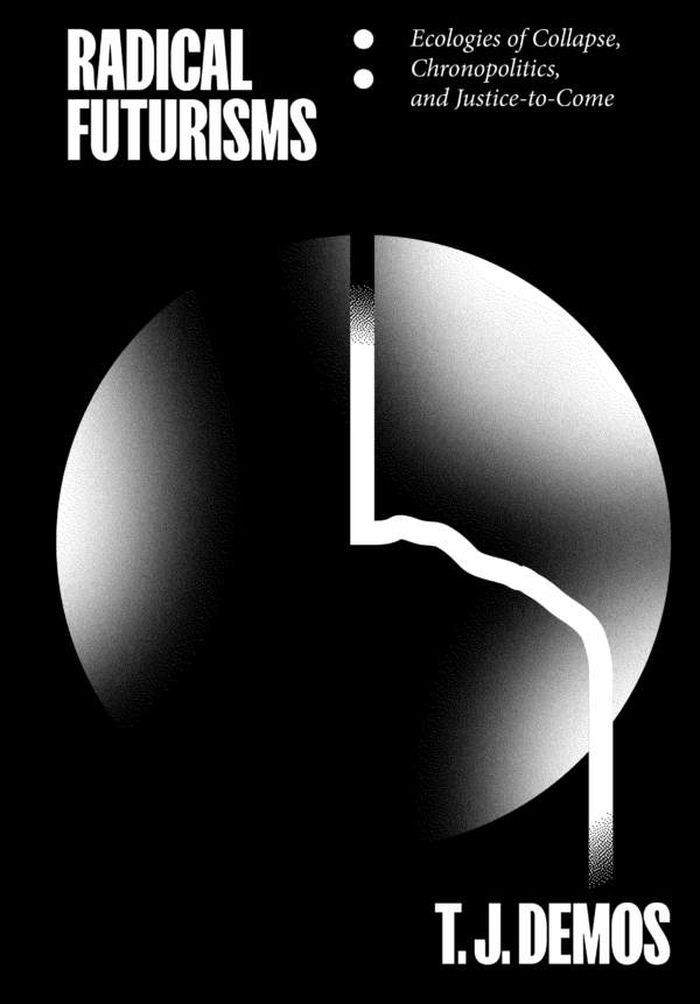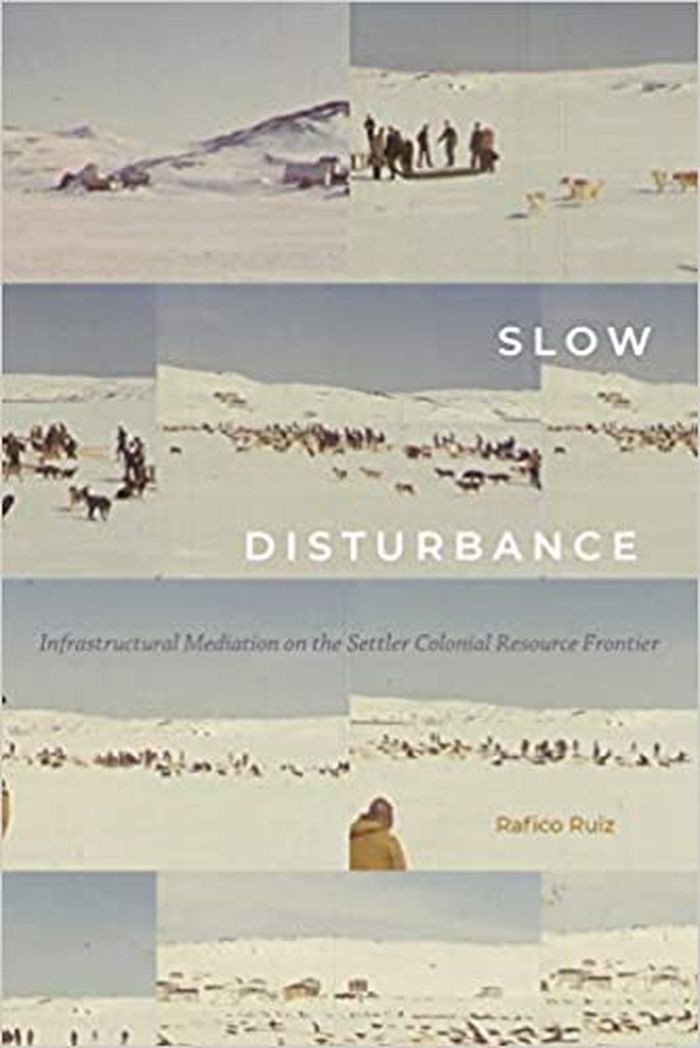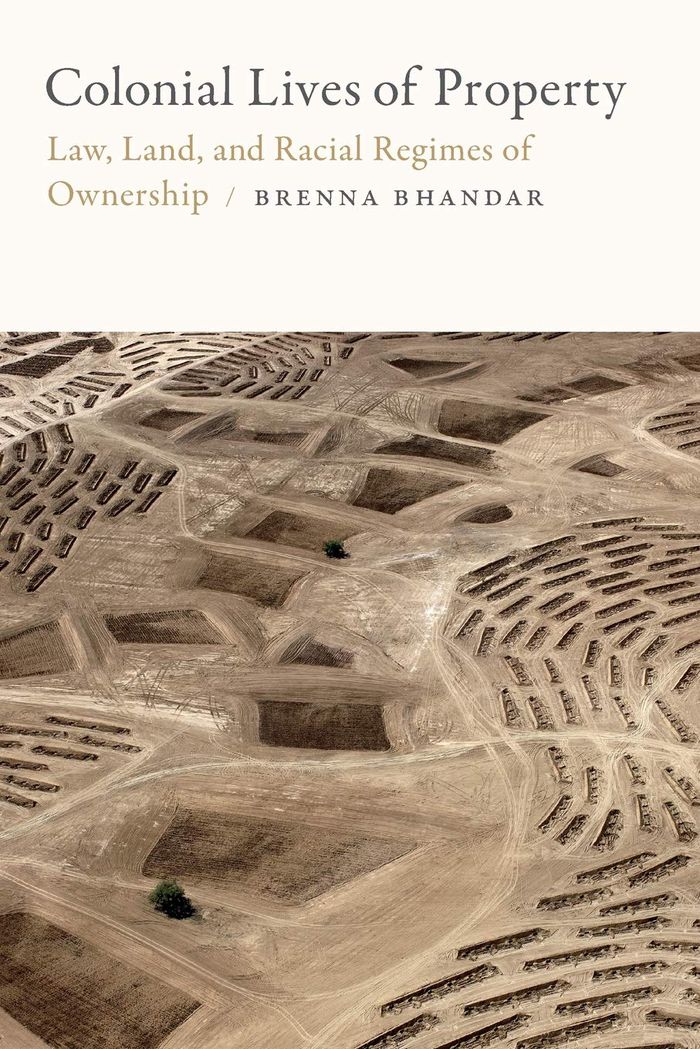$70.00
(available in store)
Summary:
What does it mean for architecture to be a truly collaborative venture where plants and other species also exercise their agency? This would mean to make architecture receptive—physically, premised on creating spaces for accommodating multispecies; and intellectually, premised on becoming aware of the needs of more-than-humans. Design-based approaches whether technocratic(...)
Living Together: More-Than-Human Ecologies for Architectural Thinking
Actions:
Price:
$70.00
(available in store)
Summary:
What does it mean for architecture to be a truly collaborative venture where plants and other species also exercise their agency? This would mean to make architecture receptive—physically, premised on creating spaces for accommodating multispecies; and intellectually, premised on becoming aware of the needs of more-than-humans. Design-based approaches whether technocratic or demonstrating a theoretical standpoint are fragmented today and demand a holistic approach. ''Living Together'' positions itself in that fragmentation. The book is an inquiry into an architecture which allows multispecies alliances to take place. It brings materialist and ecological inquiries to architectural design, practice, and thinking; acknowledging a necessity to go beyond established architectural ideals of progress, monumentality, longevity, and permanence.
Architecture ecologies
Fragments of repair
$44.00
(available in store)
Summary:
'Fragments of Repair' is the fourth publication in BAK’s publishing series BASICS which revisits fundamental questions and urgencies of our time—the “basics”—and seeks to develop afresh the building blocks of lexicons, tactics, scenarios, and relations that enable action in contemporary conditions. Today’s entwined crises reveal deep-seated wounds that issue from(...)
Architecture ecologies
May 2025
Fragments of repair
Actions:
Price:
$44.00
(available in store)
Summary:
'Fragments of Repair' is the fourth publication in BAK’s publishing series BASICS which revisits fundamental questions and urgencies of our time—the “basics”—and seeks to develop afresh the building blocks of lexicons, tactics, scenarios, and relations that enable action in contemporary conditions. Today’s entwined crises reveal deep-seated wounds that issue from historical colonialisms and present-day authoritarianisms, economic disparity and growing racial violence, and the abuses inflicted on vulnerable populations and the planet. To address this disquieting chaos, this book, co-conceptualized by artist Kader Attia with curators Maria Hlavajova and Wietske Maas, offers a collection of long- and short-form essays, visual essays, and conversations on decolonial repair as both a tool and a tactic of engagement with the current state of the world.
Architecture ecologies
$42.00
(available in store)
Summary:
This first volume in a series examining intersections between architectural theory and practice addresses environmental crisis and spatial justice through four essays. Marc Angélil and Cary Siress trace the evolution from Technocene, Thermocene, Plantationocene, to Entropocene, Capitalocene, and Urbicene. Elke Krasny reflects on scales of care within social justice and(...)
Architecture ecologies
June 2025
New tools, Vol. 1: Architectural discourses on the Anthropocene
Actions:
Price:
$42.00
(available in store)
Summary:
This first volume in a series examining intersections between architectural theory and practice addresses environmental crisis and spatial justice through four essays. Marc Angélil and Cary Siress trace the evolution from Technocene, Thermocene, Plantationocene, to Entropocene, Capitalocene, and Urbicene. Elke Krasny reflects on scales of care within social justice and decolonization. Contributors explore the "Curated Diner" as a planning intervention. Finally, Space Caviar advocates for a non-extractive approach to architecture as part of a broader economic transformation. These interdisciplinary contributions aim to reshape the discourse and discuss equitable, inclusive, and intergenerational practices.
Architecture ecologies
Architecture and the right to heal: Resettler nationalism in the aftermath of conflict and disaster
$52.95
(available in store)
Summary:
In "Architecture and the right to heal," Esra Akcan calls for architecture to take an active role in healing communities affected by socioeconomic, political, and environmental disasters. Akcan frames these processes by discussing buildings and spaces in relation to climate change mitigation and transitional justice. Focusing on lands held by the former Ottoman Empire,(...)
Architecture and the right to heal: Resettler nationalism in the aftermath of conflict and disaster
Actions:
Price:
$52.95
(available in store)
Summary:
In "Architecture and the right to heal," Esra Akcan calls for architecture to take an active role in healing communities affected by socioeconomic, political, and environmental disasters. Akcan frames these processes by discussing buildings and spaces in relation to climate change mitigation and transitional justice. Focusing on lands held by the former Ottoman Empire, Akcan highlights the ongoing struggle to heal after internal social, state, and business-led violence ranging from forced disappearance to mass extinction. Putting forth the concept of resettler nationalism as a source of displacement and partition, she argues that while architecture and urban planning have been weaponized to segregate and subjugate minorities throughout history, they could instead confront systemic violence and make accountability and reparations possible. For Akcan, healing constitutes a matter of rights as well as a holistic notion of justice that addresses the intersections of social, global, and environmental issues and one can be achieved through architecture. By locating spaces of political and ecological harm, Akcan advocates for healing on individual, communal, and planetary levels.
Architecture ecologies
Epistemic Ecology
$86.00
(available in store)
Summary:
Mainstream epistemology focuses on static states. In ''Epistemic Ecology'', Catherine Elgin adopts a dynamic stance, viewing epistemic subjects as agents rather than onlookers. She examines how, individually and collectively, we construct our epistemic practices, policies, principles, and procedures to overcome our limitations, exploit our assets, and correct our(...)
Epistemic Ecology
Actions:
Price:
$86.00
(available in store)
Summary:
Mainstream epistemology focuses on static states. In ''Epistemic Ecology'', Catherine Elgin adopts a dynamic stance, viewing epistemic subjects as agents rather than onlookers. She examines how, individually and collectively, we construct our epistemic practices, policies, principles, and procedures to overcome our limitations, exploit our assets, and correct our mistakes. Taking an ecological approach, she shows how human organisms and their social and natural environments mutually adjust to accommodate each other. Elgin’s ecological model of understanding reveals that epistemic agents and communities are interdependent and are more deeply implicated in the individuation and characterization of the phenomena they access than standard spectatorial approaches to epistemology assume.
Architecture ecologies
$42.00
(available in store)
Summary:
"Climate changed" examines models and their imperfect yet central role in understanding the relationship between global climate dynamics and the human-built environment. It compares and synthesizes the methods and function of models in disciplines ranging from architecture and planning to climate science and natural hazards research. This book considers how disparate(...)
Architecture ecologies
August 2025
Climate changed : Models and the built world
Actions:
Price:
$42.00
(available in store)
Summary:
"Climate changed" examines models and their imperfect yet central role in understanding the relationship between global climate dynamics and the human-built environment. It compares and synthesizes the methods and function of models in disciplines ranging from architecture and planning to climate science and natural hazards research. This book considers how disparate models are woven together to understand the climate crisis, underscoring the necessity of combining locally situated and transdisciplinary knowledge with climate science to navigate current and future cataclysmic changes. It highlights the challenges and consequences of disciplinary boundaries, siloed scientific knowledge, and uneven data and develops ways to overcome these limitations.
Architecture ecologies
$32.00
(available in store)
Summary:
Architecture is a constant presence in the study of human interaction- acting as both the ground on which human social behavior is performed and a means of shaping subjectivity itself. ''Proxemics'' was an attempt to visualize and instrumentalize these dynamics, appealing to both the social sciences and the emerging field of environmental design. Founded by anthropologist(...)
Proxemics and the architecture of social interaction
Actions:
Price:
$32.00
(available in store)
Summary:
Architecture is a constant presence in the study of human interaction- acting as both the ground on which human social behavior is performed and a means of shaping subjectivity itself. ''Proxemics'' was an attempt to visualize and instrumentalize these dynamics, appealing to both the social sciences and the emerging field of environmental design. Founded by anthropologist Edward T. Hall and taking shape between the departments of architecture and anthropology at the Illinois Institute of Technology, proxemics developed amidst cold war political tensions and intense social and civil unrest. ''Proxemics and the Architecture of Social Interaction'' presents selections from Hall’s extensive archive of visual materials alongside a critical analysis that traces transformations in the fields of design and science. Together these materials illuminate a moment in American history when new spatial practices arose to challenge the environmental conditions of cultural, political, and racial identity.
Architecture ecologies
$33.95
(available in store)
Summary:
There is widespread consensus that we are living at the end—of democracy, of liberalism, of capitalism, of a healthy planet, of the Holocene, of civilization as we know it. In this book, drawing on radical futurisms and visions of justice-to-come emerging from the traditions of the oppressed—Indigenous, African-American, multispecies, anti-capitalist—as materialized in(...)
Radical futurisms: Ecologies of collapse/chronopolitics/justice to come
Actions:
Price:
$33.95
(available in store)
Summary:
There is widespread consensus that we are living at the end—of democracy, of liberalism, of capitalism, of a healthy planet, of the Holocene, of civilization as we know it. In this book, drawing on radical futurisms and visions of justice-to-come emerging from the traditions of the oppressed—Indigenous, African-American, multispecies, anti-capitalist—as materialized in experimental visual cultural, new media, aesthetic practices, and social movements, T. J. Demos poses speculative questions about what comes after end-of-world narratives. He argues that it's as vital to defeat fatalistic nihilism as it is to defeat the false solutions of green capitalism and algorithmic governance. How might we decolonize the future, and cultivate an emancipated chronopolitics in relation to an undetermined not-yet? If we are to avoid climate emergency's cooptation by technofixes, and the defuturing of multitudes by xenophobic eco-fascism, Demos argues, we must cultivate visions of just futurity and multispecies flourishing.
Architecture ecologies
$35.95
(available to order)
Summary:
From the late nineteenth through most of the twentieth century, the evangelical Protestant Grenfell Mission in Newfoundland and Labrador, Canada, created a network of hospitals, schools, orphanages, stores, and industries with the goal of bringing health and organized society to settler fisherfolk and Indigenous populations. This infrastructure also served to support(...)
Slow disturbance: infrastructural mediation on the settler colonial resource frontier
Actions:
Price:
$35.95
(available to order)
Summary:
From the late nineteenth through most of the twentieth century, the evangelical Protestant Grenfell Mission in Newfoundland and Labrador, Canada, created a network of hospitals, schools, orphanages, stores, and industries with the goal of bringing health and organized society to settler fisherfolk and Indigenous populations. This infrastructure also served to support resource extraction of fisheries off Labrador's coast. In 'Slow Disturbance' Rafico Ruiz engages with the Grenfell Mission to theorize how settler colonialism establishes itself through what he calls infrastructural mediation—the ways in which colonial lifeworlds, subjectivities, and affects come into being through the creation and maintenance of infrastructures. Drawing on archival documents, maps, interviews with municipal officials, teachers, and residents, as well as his field photography, Ruiz shows how the mission's infrastructural mediation—from its attempts to restructure the local economy to the aerial surveying and mapping of the coastline—responded to the colony's environmental conditions in ways that expanded the bounds of the settler frontier. By tracing the mission's history and the mechanisms that enabled its functioning, Ruiz complicates understandings of mediation and infrastructure while expanding current debates surrounding settler colonialism and extractive capitalism.
Architecture ecologies
$36.95
(available in store)
Summary:
In this book, Brenna Bhandar examines how modern property law contributes to the formation of racial subjects in settler colonies and to the development of racial capitalism. Examining both historical cases and ongoing processes of settler colonialism in Canada, Australia, and Israel and Palestine, Bhandar shows how the colonial appropriation of indigenous lands depends(...)
Colonial lives of property: law, land, and racial regimes of ownership
Actions:
Price:
$36.95
(available in store)
Summary:
In this book, Brenna Bhandar examines how modern property law contributes to the formation of racial subjects in settler colonies and to the development of racial capitalism. Examining both historical cases and ongoing processes of settler colonialism in Canada, Australia, and Israel and Palestine, Bhandar shows how the colonial appropriation of indigenous lands depends upon ideologies of European racial superiority as well as upon legal narratives that equate civilized life with English concepts of property. In this way, property law legitimates and rationalizes settler colonial practices while it racializes those deemed unfit to own property. The solution to these enduring racial and economic inequities, Bhandar demonstrates, requires developing a new political imaginary of property in which freedom is connected to shared practices of use and community rather than individual possession.
Architecture ecologies
